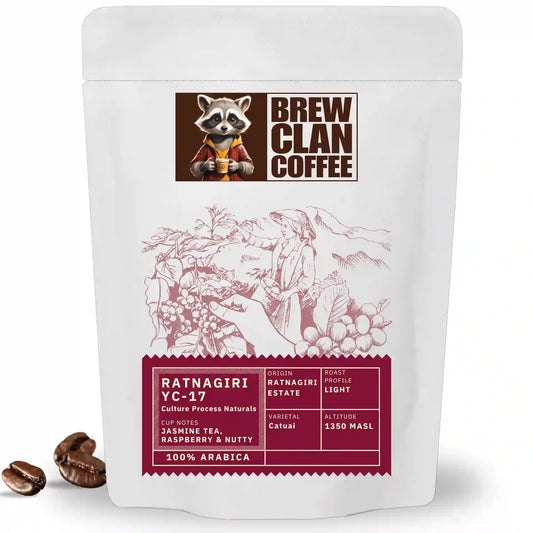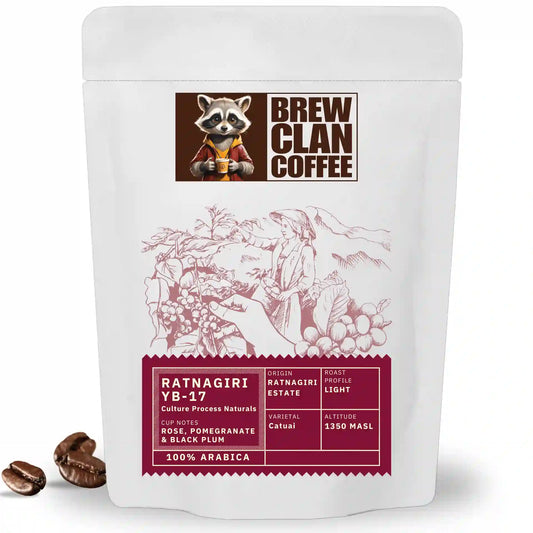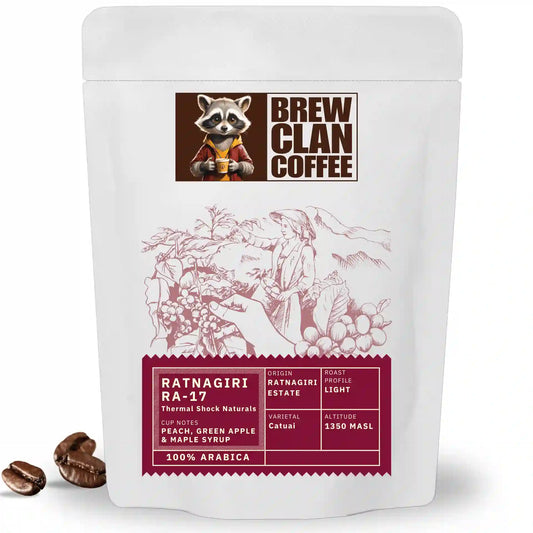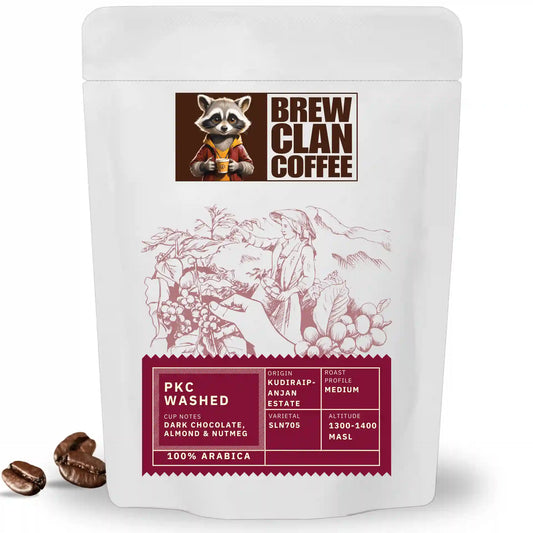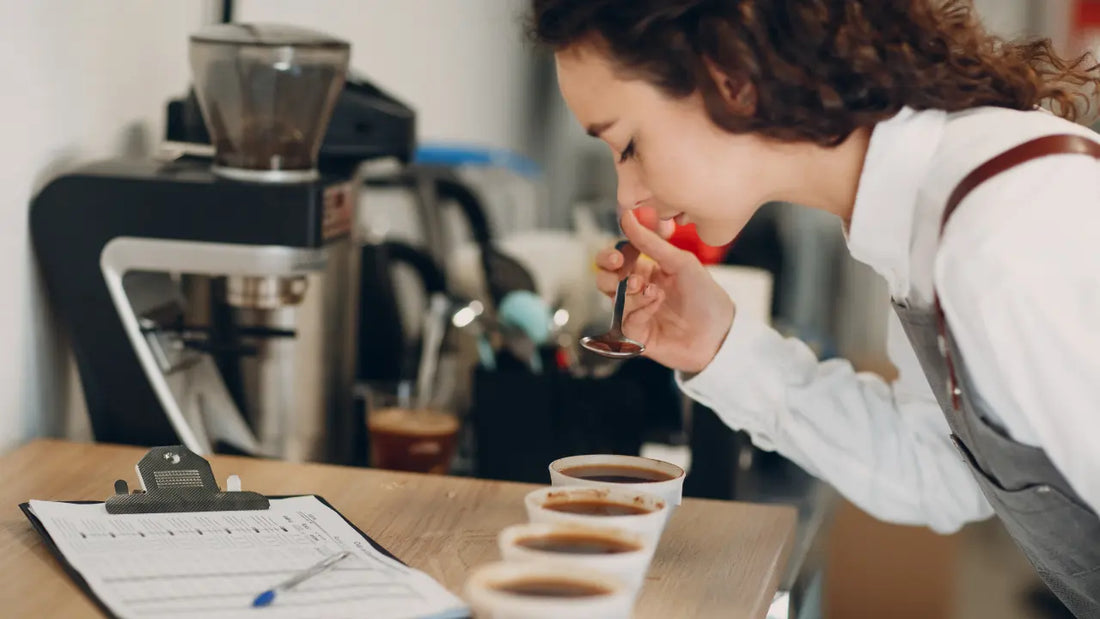
Why Does My Coffee Taste Sour? Common Mistakes Explained
Share
Nothing ruins a good morning faster than taking a sip of coffee and being hit with a harsh, mouth-puckering sourness.
If you’ve ever wondered why your carefully brewed coffee tastes like it’s gone bad or makes you wince, you’re not alone, sour coffee is one of the most common issues home brewers face.
But here’s the good news: sour coffee is almost always a sign of something easily fixable.
Whether it’s the way you grind, how long you brew, your water temperature, or even your beans themselves, there are simple tweaks that can turn that sour cup into a delicious, balanced brew you actually enjoy drinking.
In this guide, you’ll learn exactly what causes coffee to taste sour, how to tell the difference between pleasant acidity and unpleasant sourness, and practical steps you can take today to brew a smoother, sweeter cup, every single time.
Understanding Sourness vs. Acidity
Before you start changing your brewing technique, it’s important to know that not all tangy flavors in coffee are bad.
In fact, acidity is a prized part of specialty coffee, it brings brightness, liveliness, and fruity or citrusy notes that make a cup interesting. Good acidity feels crisp and balanced, like the pleasant tartness of a fresh apple or ripe berry.
Sourness, on the other hand, is when acidity becomes overwhelming, sharp, and unpleasant. It usually means something went wrong during brewing or roasting: your coffee tastes more like raw lemon juice than a balanced, flavorful cup.
Key signs you’re tasting sourness, not pleasant acidity:
- The coffee feels one-dimensional and harsh on the tongue.
- There’s little to no sweetness or balance.
- The sourness lingers and dominates every sip.
Recognizing this difference is the first step toward fixing your coffee: you don’t want to eliminate acidity entirely, but rather control your brew to bring out acidity’s sweetness and complexity instead of turning it into sourness.
Common Causes of Sour Coffee
If your coffee tastes sour, it’s almost always a sign that your brew didn’t extract enough of the coffee’s natural sugars and flavors. Here are the most common mistakes behind that unpleasant sourness, and why they cause it:
Under-Extraction
When hot water doesn’t dissolve enough coffee solids, you get a thin, sour cup. Under-extraction happens if:
- Your grind is too coarse, letting water pass through too quickly.
- Your brew time is too short, giving coffee grounds too little contact with water.
- Your coffee-to-water ratio is off, with too little coffee for the amount of water you’re using.
Low Brewing Temperature
Brewing below the ideal range of 90–96°C (195–205°F) prevents proper extraction. If your kettle isn’t hot enough or your water cools quickly (common in pour-over or French press without preheating), your coffee can turn sour and weak.
Underdeveloped or Lightly Roasted Beans
Light roasts naturally have brighter acidity, but if beans are underdeveloped during roasting (roasted too quickly or not fully caramelized), they’ll taste grassy, vegetal, and sharply sour instead of pleasantly fruity.
Stale or Old Beans
Over time, coffee loses sweetness and complexity. Beans that are past their peak freshness (weeks or months after roasting) or improperly stored (exposed to air, light, heat) often develop flat, stale sourness.
Poor Water Quality
Brewing with water that’s too soft, too hard, or contains unpleasant chemicals can emphasize sour flavors. Balanced mineral content helps coffee extract properly and taste sweet and full-bodied. Chlorinated tap water, for example, can leave coffee tasting off.
How to Fix Sour Coffee
The best part about sour coffee? It’s almost always fixable. Here’s exactly what you can do to turn a sour cup into a balanced, delicious brew:
Adjust Your Grind Size
If your grind is too coarse, water flows through too quickly, leading to under-extraction and sourness.
Solution: Go one or two steps finer on your grinder. Finer grounds slow extraction, letting more sugars and complex flavors dissolve.
Extend Your Brew Time
Brewing too fast leaves coffee under-extracted.
Solution: Increase your brew time by 10–30 seconds for methods like pour-over or French press to give water more time to extract.
Use Hot Enough Water
Brewing below 90°C (195°F) prevents proper extraction.
Solution: Heat your water to 90–96°C, and preheat your brewing equipment (e.g., French press, pour-over cone) to avoid temperature loss.
Check Your Brew Ratio
Too much water with too little coffee weakens extraction.
Solution: Aim for a ratio of 1 gram of coffee to 15–17 grams of water (roughly 1:15–1:17), which suits most brew methods.
Buy Fresh, Well-Roasted Beans
Old beans or poorly roasted coffee can taste sour no matter what.
Solution: Buy coffee roasted within the last few days, stored in airtight packaging, from a roaster focused on proper roast development, like we do at our state of the art Roastery!
Use Good-Quality Water
Bad water makes even great beans taste bad.
Solution: Use filtered water or bottled water with balanced minerals for optimal extraction and better taste.
Remember: small tweaks can have a big impact. Try changing one variable at a time and tasting the difference, you’ll quickly learn what adjustments work best for your coffee and your taste buds.
When Sourness is a Bean Characteristic
Not all sour notes mean something went wrong, sometimes, what you’re tasting is the bean’s natural acidity shining through.
High-quality specialty coffees, especially from African regions like Ethiopia or Kenya, are prized for their bright, fruity acidity, which gives them flavors like citrus, berries, or tropical fruit.
But how do you know if you’re tasting intentional acidity or a brewing mistake?
Balanced Acidity Feels Pleasant
Natural acidity in coffee comes with sweetness and complexity. A coffee with bright notes should still taste smooth, not harsh.
Sourness Dominates When Brewing is Off
If all you taste is sharp, mouth-puckering sourness with no sweetness or body, that’s a sign of under-extraction or another issue.
Read the Coffee Description
Roasters of high-quality beans will mention expected flavor notes. If your Ethiopian coffee says “lemon” or “blackberry” and you taste pleasant tartness, that’s intentional.
But if your dark-roast or generic coffee tastes sharply sour, it’s probably a brewing problem.
Knowing the difference helps you appreciate coffees with natural acidity, and gives you confidence in adjusting your brew to highlight sweetness without crossing into unpleasant sourness.
Conclusion
Sour coffee can ruin your morning, but the good news is it’s usually easy to fix. By adjusting your grind size, brewing time, water temperature, and using fresh, well-roasted beans, you can transform a sharp, sour cup into one that’s sweet, balanced, and full of rich flavors.
Understanding when sourness is a natural part of your coffee’s bright acidity, and when it’s a brewing mistake, is key to unlocking better-tasting coffee every day.
At BrewClan, we believe every home brewer deserves beans that make brewing easy and enjoyable.
Our specialty coffees are roasted to highlight natural sweetness and complexity, without the harsh sourness of underdeveloped or stale beans. Try our beans just once, we’re confident you’ll taste the difference, and we won’t have to convince you again.
Explore BrewClan’s Specialty Coffee →
FAQs
1. Why does my coffee taste sour?
Sour coffee usually happens when your brew is under-extracted, meaning water didn’t dissolve enough coffee solids. It can also result from low brewing temperature, stale beans, or using too coarse a grind.
2. What’s the difference between sourness and acidity in coffee?
Pleasant acidity is bright and sweet, like citrus or berries. Sourness is sharp, harsh, and one-dimensional, often caused by brewing errors.
3. Can stale coffee beans make coffee sour?
Yes. Old beans lose sweetness and can develop flat, sour flavors, especially if stored poorly.
4. Does water temperature affect coffee sourness?
Absolutely. Brewing below 90°C prevents proper extraction and leads to sour-tasting coffee.
5. How can I fix sour coffee?
Grind finer, brew longer, ensure water is 90–96°C, and use fresh, properly roasted beans.
6. Are light roasts always sour?
No. Light roasts have higher acidity but should taste balanced and sweet when roasted and brewed correctly. If they taste sharp and vegetal, it’s likely underdevelopment or poor brewing.
7. What grind size should I use to avoid sour coffee?
If your coffee is sour, try grinding finer to slow water flow and extract more flavors, balancing acidity with sweetness.
8. Can water quality cause sour coffee?
Yes. Water that’s too soft, too hard, or has chlorine can highlight sour notes. Use filtered water with balanced minerals.

